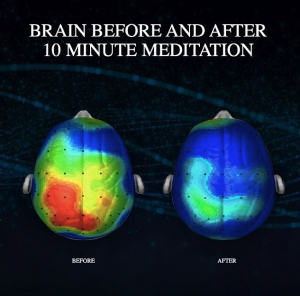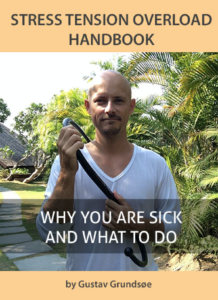Treatment
Full Recovery
With a CuraListic program we are going for the full recovery by attacking the vicious circle from many angles. We use massage, meditation, sleep training, breathing exercises, mobility training and much more to put a stop to the negative development and turn it into a positive development. First we will stop the vicious circle and then we will rewind it until you no longer have any symptoms. No more pain, no more sleepless nights, no more stress. In other words, you will be fully recovered, back to enjoying your life again.
The CuraListic toolbox uses a variety of techniques and below are explanations on how each of them contribute the cure.
When you no longer have any symptoms (and therefore technically is cured) you should expect some maintenance if you start living a hectic life again. For example, I sit in front of the computer 12-14 hours a day, not always in the most optimal positions. This means I still massage 1-2 hours a week, some weeks more and some weeks not at all. But this is by no means an issue – you feel great again, have no pain or symptoms and are completely back to normal with no restrictions. So 1-2 hours of self-massage a week (which can be done while watching TV) is by no means a problem.
Should I expect a miracle?
No, the CuraListic approach is by no means a miracle cure. It requires many hours of hard work but if you are willing to do what it takes you will be completely recovered.
The CuraListic approach will cure all symptoms coming from trigger points and stress but obviously will not cure other illnesses such as a prolapsed spinal disk, arthritis, scleroses, etc.. But watch out for incorrect diagnoses - almost all patients I meet have been misdiagnosed. Brain damage and nerve damage are just some miss-diagnoses which later on turns out not to be true. There is so much pressure on doctors to come up with a diagnoses that often they prefer giving one although they simply do not know what is wrong. You might have wondered how your diagnoses change depending on whether you speak to a surgeon, a neurologist or a psychiatrist? You might also wonder how you’ve ended up with 5 different diagnoses at more or less that same time in your life? So, please be very critical – it is very likely that what your doctors have told you is simply not true.
The great news is that the vast majority of patients in this category suffer from nothing else than a bad case of Stress Tension Overload. Based on my experience I would estimate that as much as 95% of patients with the diagnosis of whiplash/fibromyalgia/post-concussion simply suffer from Stress Tension Overload.
Massage
Trigger point massage is the most important tool in the CuraListic toolbox and you could spend as much as 4-6 hours a day massaging your trigger points. Little by little even the most tender muscles and most persistent trigger points will start to release their grip and gradually the symptoms will reduce and eventually disappear all together. The massage however should be complimented by meditation, breathing exercises, sleep training etc.
Meditation and Mindfulness
 The purpose of meditation is to achieve a greater control over your thoughts. Many whiplash patients (STO Symptom) are filled up with negative thoughts, hopelessness, desperation, worry etc. This is no surprise and quite expected – even the most optimistic individual will be overwhelmed when suffering from permanent pain. Being stuck in such a negative thought pattern is in itself horrible but on top of that it leads to stress, sleepless nights and even more anxiety. All of which contributes to the development of more muscle tension and trigger points.
The purpose of meditation is to achieve a greater control over your thoughts. Many whiplash patients (STO Symptom) are filled up with negative thoughts, hopelessness, desperation, worry etc. This is no surprise and quite expected – even the most optimistic individual will be overwhelmed when suffering from permanent pain. Being stuck in such a negative thought pattern is in itself horrible but on top of that it leads to stress, sleepless nights and even more anxiety. All of which contributes to the development of more muscle tension and trigger points.
Mindfulness meditation aims to break down this negative thought pattern so that the body can once again relax. You will become more relaxed, sleep better and your muscles will get less tense, slowing down the development of trigger points and turbo charge your cure.
Meditation can be practiced by all people regardless of how stressed and anxious you are. Many people have not received proper instruction in meditation and have often wrongfully concluded that they are not capable of doing it. If this is your view it is wrong.
Sleep training
Many whiplash patients (STO-Syndrome) suffer from permanent or occasional insomnia (inability to sleep well). Most often the sleep disorder comes from a generally high level of bodily stress and ironically it is often the fear of not being able to sleep which makes you unable to sleep. Most people have probably experienced that the more desperate you are to get some sleep the less likely you are to fall asleep. Therefore it is usually the stress filled thoughts that makes the patient enable to sleep.
The most important tool to fight insomnia is meditation – lots of meditation! It will de-stress your body and enable you take control over your thoughts when it is time to go to bed. We will also spend time getting rid of counter productive bed habits such as looking at your clock every time you wake up, having changing bed times and napping throughout the day.
Mobility training
When a muscle hurts the body’s natural defence mechanism is to limit activity of that muscle so that it can heal until it does not hurt anymore. This makes perfect sense when dealing with a temporary injury so that the muscle can heal. But when it comes to chronic pain this inactivity will only make it worse and instead of healing this inactivity will contribute to the development of trigger points.
We work with a number of different mobility programs and mild strength building exercises and are inspired by Tai Chi and Qigong.
